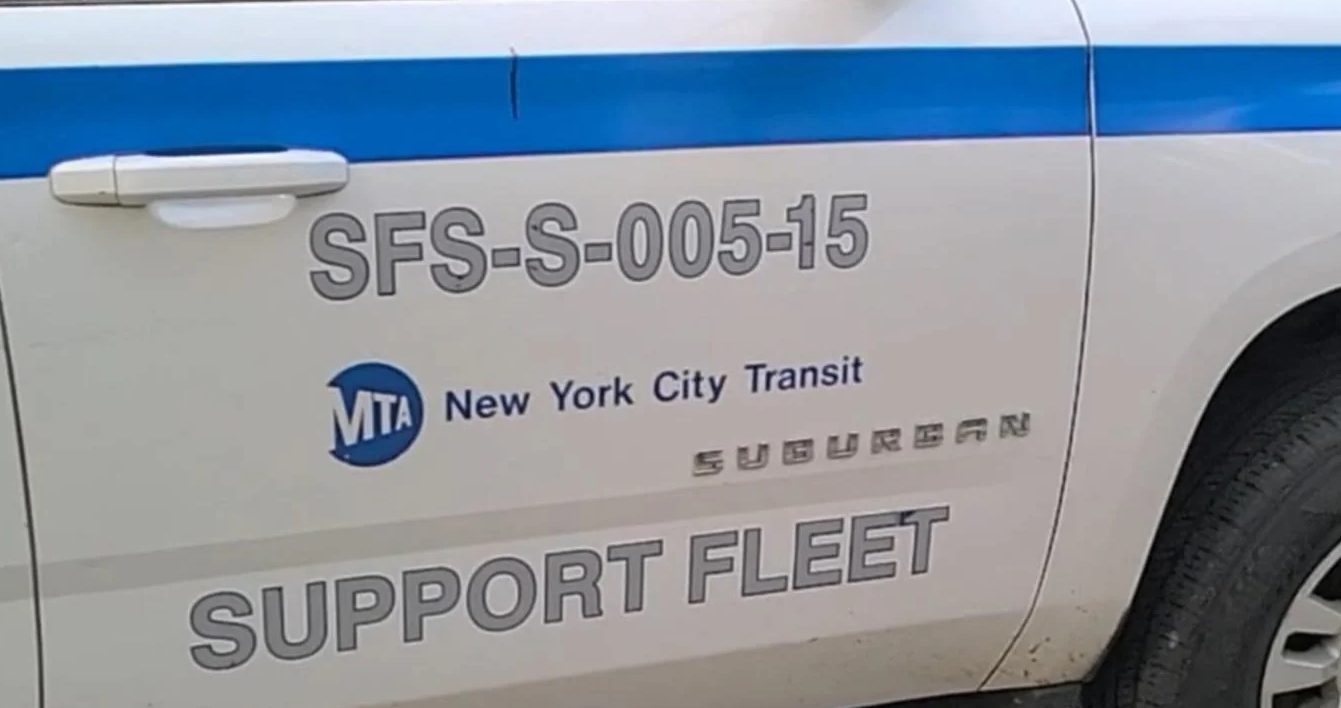Officials in the region's transit network need to exercise greater oversight over agency vehicles to reduce excessive idling and unsafe driving by employees, according to a pair of audits issued today by the MTA's top watchdog.
Auditors working for the Office of the MTA Inspector General reviewed the vehicle monitoring system, called FleetTrack, for both the Long Island Rail Road and NYC Transit during different periods in 2023 and found that LIRR vehicles idled roughly 19 percent of the time, and that 64 percent of NYC Transit's 417 vehicles idled excessively for over 5,000 hours.
That's an average of over 18 hours per vehicle.
And the IG was fairly lenient on what it considered idling — defining "excessive" as an engine running for periods of five minutes or more, which is a full two minutes longer than the city requires to issue a ticket. The MTA's own policy states that drivers of agency-owned vehicles “must eliminate unnecessary idling and comply with applicable state idling laws.”
At the LIRR, some divisions were worse than others when it came to idling:

The audit also looked at instances of harsh braking — an indication of poor driving — and found there was too much of it, concluding that "management would benefit from identifying employees who repeatedly show above-average levels of these behaviors and ... take action to reduce excessively risky driving habits," the IG's office said in a statement.
Alas, the opposite is happening, according to the audit, which found that LIRR personnel did not fully utilize the tracking software's capability "to monitor and report on driving behaviors." Meanwhile, "No one in NYC Transit is monitoring driver behavior" at that agency, nor are any NYC Transit employees trained on how to even review the data for risky driving behaviors, the IG stated.
How is that possible? It's all about monitoring. "NYC Transit does not require drivers to swipe or tap an identification card before driving an agency vehicle," the IG reported.
"The agency’s highway fleet is not equipped with card readers," the IG said in a statement. "Instead, agency personnel must refer to paper mileage logs if they need to determine who had been driving a vehicle on a given date, e.g., if the agency received a notice that a driving violation had occurred. The Office of Inspector General learned that agency leaders made the decision not to require swiping-in because employees’ ID cards were not compatible with the vendor’s contactless technology at the time."
When OIG discussed this finding with NYC Transit officials, the OIG was told it was "the first time some of them had reviewed high-level summary data about excessive idling and risky driving-related behaviors," the audit states. "NYC Transit officials further agreed that to better manage this risk, the agency should assign responsibility for this task and take other steps as well."
Inspector General Daniel Cort called the report "important."
"Unsafe driving and excessive idling raises public and employee safety issues as well as worker productivity concerns," he said in a statement. "Technology is available to monitor and reduce dangerous practices, and our team has offered viable suggestions for better implementation."
The concerns follow similar alarm bells in reports by the Inspector General's office in 2012 and 2018. Both agencies promised to implement changes after those audits, but failed to.
This time, the agencies again accepted the IG's report with timelines for implementing its recommendations. The LIRR, for example, said that some idling "is acceptable – or even necessary – in emergency situations or to protect employees from adverse weather conditions [but] managers [will] focus on employees with above-average levels of idling."
One thing unmentioned in the audits is why transit agencies have so many vehicles and why their employees are driving around so much in the first place.
NYC Transit has 1,054 non-revenue cars, vans, sport utility vehicles, and small pickup trucks and the LIRR has 233 such vehicles. The report claimed the agencies use their cars and trucks to inspect and maintain "far-flung equipment and facilities efficiently" or to respond to the site of an accident.






